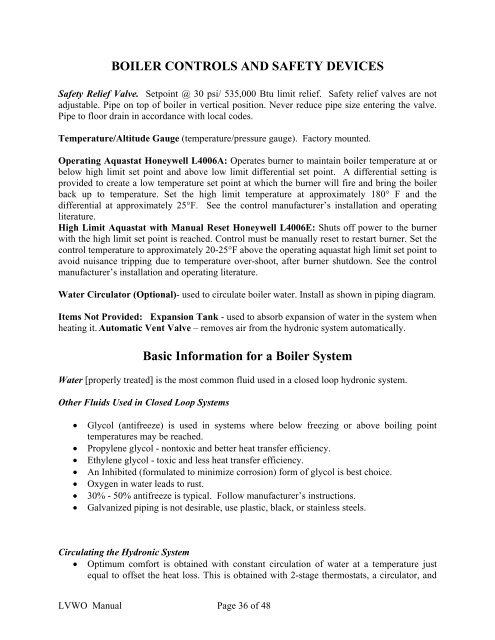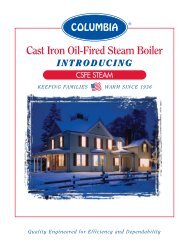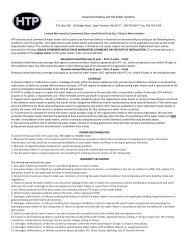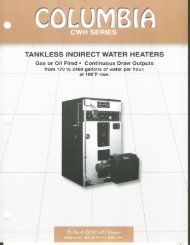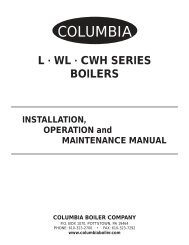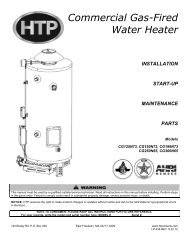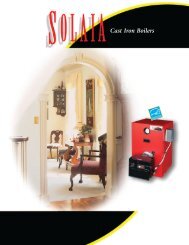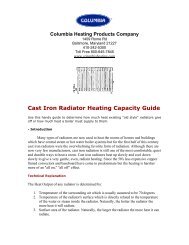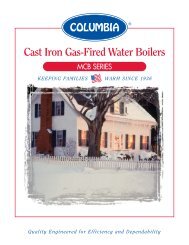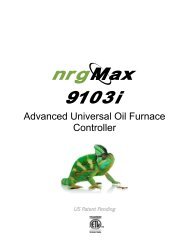LVWO Waste Oil Boiler - Columbia Heating
LVWO Waste Oil Boiler - Columbia Heating
LVWO Waste Oil Boiler - Columbia Heating
Create successful ePaper yourself
Turn your PDF publications into a flip-book with our unique Google optimized e-Paper software.
BOILER CONTROLS AND SAFETY DEVICESSafety Relief Valve. Setpoint @ 30 psi/ 535,000 Btu limit relief. Safety relief valves are notadjustable. Pipe on top of boiler in vertical position. Never reduce pipe size entering the valve.Pipe to floor drain in accordance with local codes.Temperature/Altitude Gauge (temperature/pressure gauge). Factory mounted.Operating Aquastat Honeywell L4006A: Operates burner to maintain boiler temperature at orbelow high limit set point and above low limit differential set point. A differential setting isprovided to create a low temperature set point at which the burner will fire and bring the boilerback up to temperature. Set the high limit temperature at approximately 180° F and thedifferential at approximately 25°F. See the control manufacturer’s installation and operatingliterature.High Limit Aquastat with Manual Reset Honeywell L4006E: Shuts off power to the burnerwith the high limit set point is reached. Control must be manually reset to restart burner. Set thecontrol temperature to approximately 20-25°F above the operating aquastat high limit set point toavoid nuisance tripping due to temperature over-shoot, after burner shutdown. See the controlmanufacturer’s installation and operating literature.Water Circulator (Optional)- used to circulate boiler water. Install as shown in piping diagram.Items Not Provided: Expansion Tank - used to absorb expansion of water in the system whenheating it. Automatic Vent Valve – removes air from the hydronic system automatically.Basic Information for a <strong>Boiler</strong> SystemWater [properly treated] is the most common fluid used in a closed loop hydronic system.Other Fluids Used in Closed Loop Systems• Glycol (antifreeze) is used in systems where below freezing or above boiling pointtemperatures may be reached.• Propylene glycol - nontoxic and better heat transfer efficiency.• Ethylene glycol - toxic and less heat transfer efficiency.• An Inhibited (formulated to minimize corrosion) form of glycol is best choice.• Oxygen in water leads to rust.• 30% - 50% antifreeze is typical. Follow manufacturer’s instructions.• Galvanized piping is not desirable, use plastic, black, or stainless steels.Circulating the Hydronic System• Optimum comfort is obtained with constant circulation of water at a temperature justequal to offset the heat loss. This is obtained with 2-stage thermostats, a circulator, and<strong>LVWO</strong> Manual Page 36 of 48


